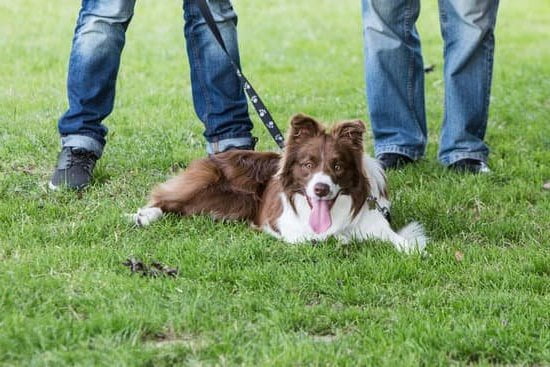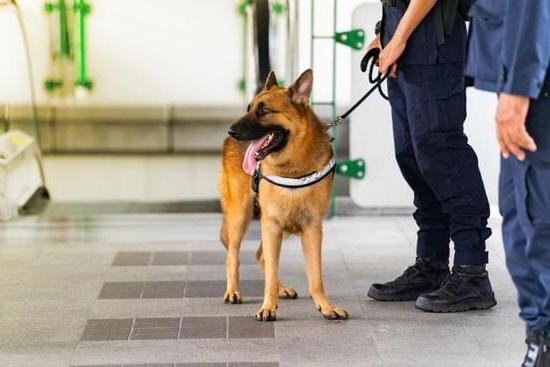Are you wondering what is crate training a dog and how it can benefit your furry friend? Crate training is a valuable tool for pet owners that can help in house training, keeping your dog safe, providing comfort, and more. In this article, we’ll explore the ins and outs of crate training, from its benefits to choosing the right crate and introducing your dog to it.
Crate training is the process of teaching a dog to comfortably spend time in a designated crate or kennel. This training technique can be especially useful for puppies who are being house trained, as well as for adult dogs who may need a safe space when left alone at home. In addition to helping with house training, crate training can also provide a sense of security for dogs and serve as their own “den”.
When it comes to crate training, there are various factors to consider, including the type of crate that is best suited for your dog’s needs and size. The process of introducing your dog to the crate should be done gradually and with positive reinforcement.
Furthermore, creating a comfortable and safe environment within the crate will help ensure that your dog sees it as a welcoming space rather than a punishment. Stay tuned as we delve into all aspects of crate training in this comprehensive guide.
The Benefits of Crate Training
Crate training a dog has numerous benefits for both the dog and the owner. Here are some of the advantages of using this method:
- Potty Training: One of the main benefits of crate training is that it can aid in potty training your dog. Dogs have a natural instinct not to soil their sleeping area, so using a crate can help them learn to hold their bladder and bowels until they are let outside.
- Safety and Security: A crate provides a safe and secure space for your dog, especially when you are unable to supervise them. It can prevent destructive behavior, such as chewing on furniture or getting into hazardous items around the house.
- Transportation: Crate training makes it easier to transport your dog, whether it’s for trips to the vet or traveling in a car or airplane. Dogs that are accustomed to being in a crate will feel more at ease during these situations.
- Managing Anxiety: For dogs that suffer from anxiety or separation issues, being in a crate can provide them with a sense of security and comfort. The enclosed space can help reduce stress and calm their nerves.
How to Choose the Right Crate for Your Dog
When it comes to crate training a dog, choosing the right crate is essential for the success of the training process. The crate should be a safe and comfortable space for your dog, so it’s important to consider your dog’s size, breed, and individual needs when selecting a crate. Here are some tips on how to choose the right crate for your dog:
- Consider the size of your dog: The crate should be big enough for your dog to stand up, turn around, and lie down comfortably. However, it shouldn’t be too big that it gives them extra space to use one end as a bathroom.
- Think about the material: Crates come in various materials such as wire, plastic, and fabric. Wire crates are typically more open and allow for better ventilation, while plastic crates provide a den-like environment that some dogs may prefer. Fabric crates are lightweight and can be easily collapsible for travel.
- Assess your dog’s behavior: If your dog is prone to chewing or trying to escape, a sturdy wire crate may be the best option. For dogs who feel more secure in enclosed spaces, a plastic or fabric crate may be preferable.
It’s also important to make sure that the crate has proper ventilation, secure latches or locks, and smooth edges to prevent any injuries. Additionally, consider whether you’ll need a portable or collapsible crate for traveling purposes. By taking these factors into consideration, you can select the most suitable crate for your dog’s comfort and safety during training.
Remember that what is crate training a dog is not just about confining them in a small space but rather creating a safe haven where they can rest and find comfort. Choosing the right crate plays an important role in making this possible.
Step-by-Step Guide to Introducing Your Dog to the Crate
Crate training is a useful tool for dog owners, whether they have a new puppy or an adult dog. It can help with housebreaking, preventing destructive behavior, and providing a safe space for the dog. However, introducing your dog to the crate in the right way is crucial for successful crate training.
The first step in introducing your dog to the crate is to make it a positive and inviting space. Place the crate in an area where the family spends a lot of time, as dogs are social animals and prefer to be around people. You can start by leaving the door open and placing treats, toys, and comfortable bedding inside to encourage your dog to explore the crate.
Once your dog seems comfortable going in and out of the crate on their own, you can start feeding them their meals near the crate, then inside it. This will create positive associations with the crate and help your dog see it as a pleasant place. Gradually work up to closing the door for short periods while you are home, then gradually increasing the time they spend inside with the door closed.
It’s important to remember that every dog is different, so some may take longer to get used to being crated than others. It’s essential to be patient and never force your dog into the crate as this will create negative associations with it. Using positive reinforcement like treats and praise can go a long way in helping your dog accept and even enjoy their time in the crate.
| Introducing Your Dog to Crate | Important Steps |
|---|---|
| Make it positive | Encourage exploration with treats and toys |
| Feeding time | Start feeding meals near then inside the crate |
| Gradual Process | Close door gradually while you’re home |
Common Mistakes to Avoid When Crate Training
Crate training is a popular method used by many dog owners to help with housebreaking, providing security, and ensuring the safety of their pets when they are left alone. However, there are some common mistakes that can hinder the success of crate training and even have a negative impact on your dog’s behavior.
One common mistake is using the crate as a form of punishment. The crate should never be associated with anything negative for your dog. Using it as a place for time-outs or as a punishment for bad behavior will only create anxiety and fear around the crate, making it ineffective as a training tool.
Another mistake to avoid is leaving your dog in the crate for too long. While crates can provide a sense of security and comfort for dogs, leaving them confined for extended periods can lead to stress, boredom, and even physical discomfort. It’s important to gradually increase the amount of time your dog spends in the crate and provide plenty of mental and physical stimulation outside of it.
Additionally, rushing the process of crate training can be detrimental. It’s essential to introduce the crate gradually and allow your dog to become familiar with it at their own pace. Pushing them into the crate or forcing them to stay inside before they are ready can cause resistance and make the training process more challenging.
| Common Mistakes | Impact |
|---|---|
| Using the crate as punishment | Creates anxiety and fear |
| Leaving your dog in the crate for too long | Stress, boredom, physical discomfort |
| Rushing the process of crate trainingResistance, challenges in training |
Using Positive Reinforcement in Crate Training
Crate training a dog can be a challenging process, but using positive reinforcement techniques can make the experience more enjoyable for both you and your furry friend. Positive reinforcement involves rewarding your dog for good behavior, rather than punishing them for bad behavior. This approach can help create a positive association with the crate and make the training process more effective.
Using Treats and Rewards
One of the most effective ways to use positive reinforcement in crate training is by using treats and rewards. Whenever your dog willingly enters their crate or remains calm inside, offer them a tasty treat or reward them with praise and affection. This will help your dog associate the crate with positive experiences and encourage them to view it as a safe and comfortable space.
Creating a Positive Environment
In addition to using treats and rewards, it’s important to create a positive environment around the crate. Place your dog’s favorite toys, blankets, or bedding inside the crate to make it feel cozy and inviting. You can also leave the door open initially so that your dog can explore the crate at their own pace, without feeling trapped.
Consistency Is Key
Consistency is crucial when using positive reinforcement in crate training. Be sure to always reward your dog for entering the crate on their own or displaying calm behavior inside. With patience and consistency, your dog will begin to see the crate as a positive space where they can relax and feel secure.
By utilizing positive reinforcement techniques in crate training, you can help your dog develop a positive association with their crate while also strengthening your bond with them. Remember to be patient and consistent throughout the training process, as every dog learns at their own pace.
Crate Training for Puppies vs Adult Dogs
Introduction
When it comes to crate training, the approach may differ depending on whether you are training a puppy or an adult dog. Both puppies and adult dogs can benefit from crate training, but there are some important differences to consider when approaching the process.
Puppies
Puppies are like sponges, ready to absorb new information and experiences. When it comes to crate training, starting early is key. Introducing a crate to a puppy as early as 8-10 weeks old can help them become accustomed to the space and understand that it is their safe haven. Puppies have boundless energy and curiosity, so using the crate as a tool for managing their energy levels and preventing accidents while you are away can be extremely beneficial.
Adult Dogs
The approach to crate training with adult dogs may require more patience and understanding, especially if your dog has not been introduced to crate training before. It’s important to take things slow and allow your adult dog to get acclimated to the idea of using a crate.
Keep in mind that some adult dogs may have negative associations with crates due to past experiences, so it’s crucial to use positive reinforcement and make the crate a comfortable and positive space for them. Understanding your dog’s behavior and utilizing their established routines can also impact how successful they will be in adjusting to crate training.
Overall, whether you are crate training a puppy or an adult dog, consistency, patience, and understanding your pet’s specific needs are key in successfully implementing this training method.
How to Make the Crate a Comfortable and Safe Space for Your Dog
In conclusion, crate training can be a valuable tool for both puppies and adult dogs. It offers numerous benefits such as providing a safe and comfortable space for your dog, aiding in house training, preventing destructive behavior, and even serving as a travel or confinement solution.
When choosing the right crate for your dog, it’s important to consider their size, breed, and specific needs. Introducing your dog to the crate should be done gradually and positively, using treats and praise to create a positive association with the space.
It’s crucial to avoid common mistakes such as using the crate for punishment or leaving your dog in the crate for excessively long periods of time. Positive reinforcement is key in crate training to encourage your dog to willingly enter and stay in the crate. Additionally, making the crate a comfortable and safe space for your dog involves adding bedding, toys, and ensuring that the environment is pleasant.
Whether you’re crate training a puppy or an adult dog, consistency is key. With patience and the right approach, you can help your furry companion see their crate as their own personal den-a place where they feel secure and at ease. Crate training may take time and effort, but with dedication, it can greatly benefit both you and your four-legged friend.
Frequently Asked Questions
What Does Crate Training a Dog Do?
Crate training a dog serves several purposes. It provides a safe space for the dog to retreat to, helps with potty training by teaching bladder control, and can prevent destructive behavior when unsupervised.
How Long Does It Take to Crate Train a Dog?
The time it takes to crate train a dog varies depending on the individual dog. Some dogs may adapt quickly within a few days, while others may take weeks or even months to fully acclimate to the crate.
Should I Crate My Dog at Night?
Whether or not you should crate your dog at night depends on your specific situation and the needs of your dog. For puppies, crating at night can aid in house training and provide security. However, adult dogs may not need to be crated at night unless there are behavior or anxiety issues that the crate helps address.

Welcome to the blog! I am a professional dog trainer and have been working with dogs for many years. In this blog, I will be discussing various topics related to dog training, including tips, tricks, and advice. I hope you find this information helpful and informative. Thanks for reading!





